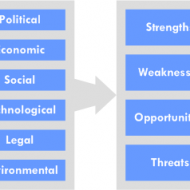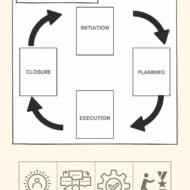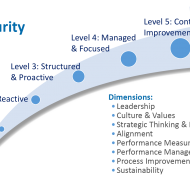Posted by Managementguru in Business Management, Decision Making, Entrepreneurship, Marketing
on Sep 21st, 2014 | 0 comments

Business Viability Checklist for Entrepreneurs Hey Folks, here is a checklist for business viability or feasibility analysis, the fore-most step before starting a venture. Whether you are a dare devil driver yearning to embrace entrepreneurship as a result of your eternal frustration of saying” Yes-Boss” 24/7, or a first generation entrepreneur , this checklist will be of immense help in that it will reduce the elements of uncertainty and risk. Unlock massive growth using the business development channel. Learn pitching, BD strategy, cold emailing, & deal closing. Bestselling **** Many businesses look at profit within quotes as ultimate viability. Even if the business is not currently profitable or undergoing a growth surge, or just going through a bad patch – there is an anticipation of being profitable at some future date. This hope of future profit warrants continued investment. We can also consider the social and environmental aspects of an organization adding value, if it satisfies any social costs. You need to know what is viability? Viability is defined as the ability to survive or persist. In a business sense, that ability to survive is ultimately linked to financial performance and position. A business is viable where either: it is returning a profit that is sufficient to provide a return to the business owner while also meeting its commitments to business creditors it has sufficient cash resources to sustain itself through a period when it is not returning a profit. ASK YOURSELF THE FOLLOWING QUESTIONS BEFORE STARTING-UP THE OPEARTIONS: Why are some companies PROFITABLE and some not? Why do some companies CONTINUE TO EXIST and some not? What does success and survival mean? How ESSENTIAL is profit? How can a company survive when it is not making a profit? How can a company NOSE-DIVE when it is making a large profit? How VITAL is growth? Can a company become NON-VIABLE simply because it fails to maintain its year-on-year growth? How imperative is CORPORATE IMAGE? Are these factors relevant to business viability? The following post from franchisesunder10k.net provides great insight on easy online businesses to start in 2018. https://franchisesunder10k.net/these-are-the-easy-online-business-opportunities-you-ve-been-looking-for Fundamentals of a Feasibility Plan • Provide key information needed by investors and bankers • Reasons for its chance of success/failure • Supporting Documents • Explanation of the principal concept underlying your venture and what sets it apart from other businesses. Infographic Courtesy : Entrepreneur.com SOME OF THE REASONS WHY NEW VENTURES FAIL • Lack of Objective Evaluation • No Real Insight into the Market • Inadequate Understanding of Technical Requirements • Poor Finance Understanding • Lack of Unique Selling Proposition • Ignorance of Legal Issues Let us now look at some of the important dimensions of business viability: Market viability Technical viability Business Model viability Management model viability Economic and Financial Model viability Market Viability: Utilize Porter’s 5 Competitive Forces Model to understand market viability and industry position. Technical Viability: You do not have to incorporate specific financial information in the technical portion of your feasibility study, but all data in this component must support your financial figures represented elsewhere. Basic things that most businesses need to include in their technical feasibility study include: Materials Labor Transportation or Shipping Physical Location Technology Business Model Viability: P.E.S.T. Analysis A PEST analysis is a business measurement tool. PEST is an acronym for Political, Economic, Social and Technological factors, which are used to assess the market for a business or organizational unit. Management Model Viability: Decision making process Training and Cross-training Management Capability to effectively lead the organization in a sustainable growth mode Management Systems and processes, and General Leadership Capabilities are scrutinized. Economic and Financial Mode Viability: Capital Structure Cash Management Profitability and Liquidity are dealt with when...

Posted by Managementguru in Decision Making, Project Management, Strategy
on May 4th, 2014 | 0 comments

In many segments that rely on a culture of project management, the project officially begins with the official approval of the project, which is not so in the development sector, where the project life more commonly begins with a Project Identification and Screening Phase. The seed of a project arises merely as an idea – a need or opportunity that is weighed, scrutinized, and eventually developed into a project which is managed through the project life cycle. The most critical question one has to ask would be ‘Are we doing the right project?’ Because a problem well understood is half done. Let us Cruise Through the Ideas in Project Identification and Screening Search for New Ideas What are the objectives? *Brainstorm to generate alternative solutions. -Emerging market trends. –SWOT analysis. -Other constraints *Shortlist candidate ideas for detailed scrutiny. Motivation Projects are a means to accomplish -Individual or family objectives -Organizational objectives -National or global objectives Project Identification begins in response to the specific need or the objectives Objectives To increase profitsTo minimize threats of lossesTo become more competitiveTo provide help after a disasterTo train people in a new areaTo reduce pollution in DelhiTo become a successful entrepreneur Download this project planner template to effectively conduct your projects 👇 Minimal-and-Elegant-Project-Planner-TemplateDownload Swot Analysis A tool that detects the strengths, weaknesses, opportunities and threats of an organization. In particular, SWOT is a basic, straightforward model that measures what an organization can and cannot do as well as its probable opportunities and threats. The method of SWOT analysis is to take the information from an environmental analysis and distinguish it into internal (strengths and weaknesses) and external issues (opportunities and threats). Once this is over, SWOT analysis determines what may assist the firm in accomplishing its objectives, and what obstacles must be overcome or minimized to achieve desired results. • Objectives • Experience • Resources • Environment pressures -Keeping these factors in mind an analysis of strengths, weaknesses , opportunities and threats is made to identify and select suitable projects. STRENGTHS • Experience and expertise • Financial position • Capital raising capability • Industrial contacts • Foreign collaborations WEAKNESSES • Newer unfamiliar technologies • Inability to raise huge investments • Lack of experience • Lack of trained personnel • Inability to forecast market trends OPPORTUNITIES • Emerging technologies • New products with new markets • New processes with better features • Special financing schemes • Government and other incentives THREATS • Competitors • Poor state of the economy • Outdated technology • Unprofessional management skills • New products and services BRAINSTORMING • A good means to generate new project ideas • Focus on uninhibited participation by a group • Listing of ideas without suppressing creativity at source • List of ideas subjected to screening and evaluation subsequently Download this meeting notes planner template to effectively conduct your project meetings 👇 Pink-Yellow-Gradient-Project-Meeting-Notes-PlannerDownload SCREENING OF IDEAS Poor Fair Good Vgood Excellent (1) (2) (3) (4) (5) Weight •Cost * 20% •Risk * 30% •Return * 40% •Hazard * 10% •(score = 2×0.2+3×0.3+4×0.4+2×0.1= 3.1) CRITERIA IN SCREENING PROJECTS • Investment • Rate of return • Risk • Likely profit • Payback • Similarity to existing business • Expected life • Flexibility • Environment impact • Competition Let us look at the following example – Reducing Vehicular Pollution in Delhi Ideas Generated in Brain Storming Restrict registration of new vehiclesEnforce strict emission regulations for vehiclesBan diesel run vehicles on roadIntroduce MRTS – Mass Rapid Transport System for the cityEncourage use of car poolsGrow more trees/ green belts in the cityDeclaring no traffic zones in the cityBan vehicles with an age of ten or more years from plying on the roads These and...

Posted by Managementguru in Business Management, Decision Making, Organisational behaviour, Principles of Management, Strategy
on Mar 24th, 2014 | 0 comments

STRATEGIC PLANNING Strategic planning is the primary step in the process of strategic management [Strategic management is a comprehensive topic that covers almost all the functional aspects of the organization] which can be outlined from at least two perspectives: First, strategy is the “broad programme for defining and achieving the objectives of an organization and implementing its mission”. Secondly, “It is the pattern of the organization’s response to the external environment over a period of time”. A strategy that takes a broad and typically long range focus is called strategic planning. MBA Application Strategies for Top Business Schools Strategic planning is the process that classifies the long range goals of the organization and opts for the precise means (strategies and polices) for achieving these goals, allocates resources, and develops long range plans to reach the destination. Watch this Video to Understand the Overview of Strategic Planning Process Time-Horizon: Strategic planning takes into account the extended time horizon. There may not be any immediate impact out of strategic planning, but the consequences in the long-run prove to be gradual and significant as well. It provides with the necessary action plans to make a difference in vital areas concerning development. You can always associate innovativeness with strategy since it explores new paradigms and tries to enhance the impact. When the size of organizations expands, they are broken down into strategic business units (SBU’S) for the purpose of functional excellence. These units are expected to operate as if they were relatively independent businesses. WHY STRATEGIC LEADERSHIP IS IMPORTANT A Tailor Made Approach: A tailor made approach is essential when it comes to strategy development the systematic analysis of the factors associated with customers and competitors (the external environment) helps the organization to meet the challenges of modern society. More and more organizations are focusing on formal approaches and concepts for planning their long range process. Specifically these challenges are a result of increasing rate of change, the complexity of manager’s jobs, the increasing importance of fitting the organization into external environment, and the increasing lag between the preparation of plans and their implementation in future. Resource Allocation: Strategic planning is an organization’s process of defining its strategy or course, and making decisions on resource allocations to pursue this strategy. Managers must be adequately geared up for strategic planning. The goals of the organization must be made plain and not unclear. Each business unit should be categorized based on its performance level to decide on the resource share to be allocated. You need to infuse cash flow into ineffectual units and divest funds from dying units into other profitable ones. The ultimate aim is to build up star performers that will be the perennial source of income or revenue generation. There should be a strong linkage between planning and control. The assessment of strategic plans of the business units must be made periodically and effectively. TOP FIVE REASONS WHY STRATEGIC PLANS FAIL SWOT Analysis: SWOT analysis is a strategic planning technique used to evaluate the Strengths, Weaknesses/Limitations, Opportunities, and Threats. Planning is the primary step for control as it provides several standards and benchmarks of control. Planning extracts commitment. Some times planning highlights the objectives only and the planning premises may not be fully reliable. Threats are to be considered as challenges and must be converted into opportunities. Two heads are better than one is the philosophy of brain storming where a group of people with knowledge and expertise assemble to lay out clear plans that will steer the organization smoothly even in times of rough...






